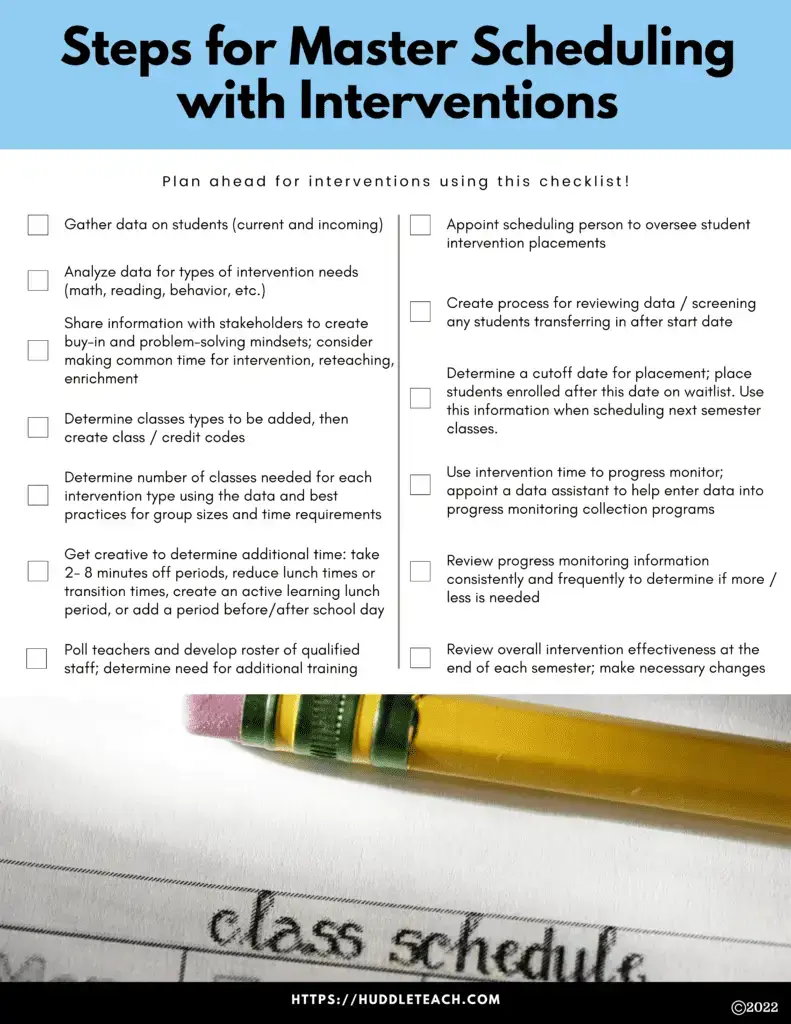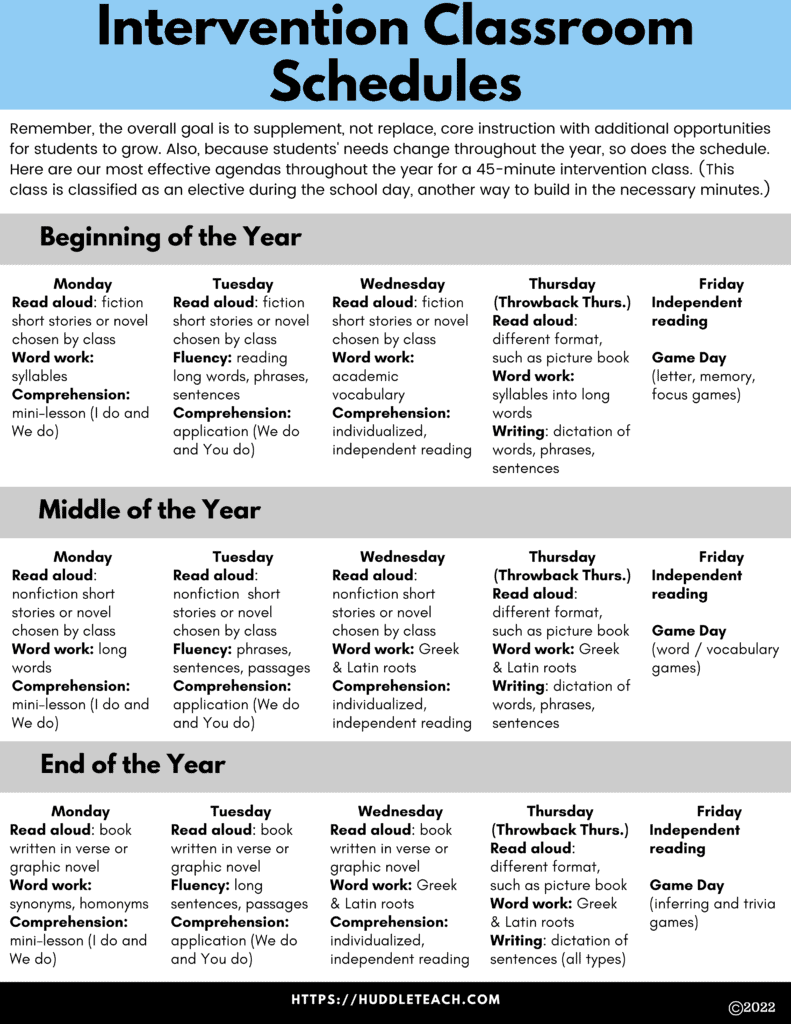
Fitting intervention instruction into your year, day, and class period
No one needs to remind teachers of the finite amount of time available each hour, day, week, and semester of the school year. No one feels it more than they do! So it’s no wonder that finding solutions for intervention schedules is a difficult task!
Challenges…as always!
Beyond the time constraints, though, are others that prevent efficient and effective interventions:
- lack of available specialized teachers
- lack of appropriate materials for intervention
- cost of intervention programs and additional instructional time
- changing requirements for the need for intervention
- inadequate assessments to identify specific needs
- rotating door of students in need of intervention
- students entering school after start dates
- rapidly changing needs of students
- misunderstanding of the use of intervention periods
- inefficient data tracking systems
- parent buy-in
- student buy-in
- communication and continuity across grades levels
- and more!
With a list like that, it’s a wonder that interventions are even possible, let alone successful! Of course they can be, though! Use this information and analyze your student data to plan for your student needs and to schedule interventions into your year, day, and week! Remember, even 20 minutes of targeted intervention a day can be effective!
(Download all these pages and more by clicking at the link at the bottom of this post!)
Getting creative when scheduling interventions
Teachers are the best at thinking flexibly! Here are some ideas that have been implemented to make time for interventions:

Scheduling interventions in master schedule
Creating master schedules should be a degree by itself! There is so much to consider, including number of teachers available who are talented and / or certified in the area of need. If you have to determine how to fit intervention into the overall school day / year, this checklist may help!

Daily Intervention Schedules
In secondary grades, a daily intervention class (or in the case of a block schedule, a consistent class) is ideal. In this case, though, distributing time to meet your students’ needs changes throughout the year. Here is a sample agenda that makes a good template for your adaptation!

Weekly Intervention Schedules
Pull out programs – and drop in programs – need their own schedules, too. These largely depend on the teachers in the room. Using a checklist like this one to help you determine how best to serve these students. Remember to be extra considerate when sharing other teachers’ rooms.

Overcoming intervention schedule difficulties
No matter how you choose to incorporate intervention time, remember that a little bit of time spent consistently on interventions makes a big difference to the progress of your students!
Download these pages and more by clicking on this link…and tell us below how you schedule interventions to work for your students!


